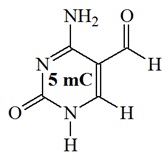|
|
|
Bio-Synthesis Newsletter - July 2016
|
The plant empire strikes back!
 Plants now know how to evade man-made herbicides. In recent years, many weeds have become increasingly resistant to glyphosate, a popular weed killer, the herbicide in Roundup. Recently the World Health Organization (WHO) has reclassified glyphosate as a cancer-causing chemical. Apparently, genetically modified (GM) foods and crops have bred superweeds and transgenes may have spread to wild plants.
Plants now know how to evade man-made herbicides. In recent years, many weeds have become increasingly resistant to glyphosate, a popular weed killer, the herbicide in Roundup. Recently the World Health Organization (WHO) has reclassified glyphosate as a cancer-causing chemical. Apparently, genetically modified (GM) foods and crops have bred superweeds and transgenes may have spread to wild plants.
Reference:
http://www.nature.com/news/case-studies-a-hard-look-at-gm-crops-1.12907
|
|
Read More
|
|
|
Can siRNA be used to knock down a disease?
 Biomedical research indicates that this is the case. Antisense oligonucleotides (ASOs) used in RNAi approaches are a new type of therapeutic drugs. RNAi therapeutics offers the hope to selectively knockdown mutated genes causing multiple types of diseases, including cancer. Already, several ASOs that have demonstrated gene knockdown efficacy in humans are in clinical trials.
Biomedical research indicates that this is the case. Antisense oligonucleotides (ASOs) used in RNAi approaches are a new type of therapeutic drugs. RNAi therapeutics offers the hope to selectively knockdown mutated genes causing multiple types of diseases, including cancer. Already, several ASOs that have demonstrated gene knockdown efficacy in humans are in clinical trials.
Reference:
Wittrup and Lieberman; 2015, Knocking down disease: a progress report on siRNA therapeutics. Nature Reviews Genetics 16, 543-552.
|
|
Read More
|
|
|
Why does freshly prepared bread and food smell so good?
 Aroma, taste, and color of food products resulting from roasting coffee, baking bread and cakes as well as cooking of meat are a result of the Maillard reaction. 2-Acetyl-1-pyrroline is one known key flavor and aroma component in bread, rice, and popcorn. However, the chemistry of the Maillard reaction is a quite complex process producing a wide range of products that influence the nutritional value of many food products. Model systems to decipher how this reaction influences food properties can be designed and analytical tools are now available for the analysis of resulting products.
Aroma, taste, and color of food products resulting from roasting coffee, baking bread and cakes as well as cooking of meat are a result of the Maillard reaction. 2-Acetyl-1-pyrroline is one known key flavor and aroma component in bread, rice, and popcorn. However, the chemistry of the Maillard reaction is a quite complex process producing a wide range of products that influence the nutritional value of many food products. Model systems to decipher how this reaction influences food properties can be designed and analytical tools are now available for the analysis of resulting products.
Reference:
Martins et al., 2000; A review of Maillard reaction in food and implications to kinetic modeling. Trends in Food Science & Technology, Volume 11, Issues 910, 10 September 2000, Pages 364373.
http://www.sciencedirect.com/science/article/pii/S092422440100022X
Li et al. (2012); Formation and Inhibition of N-(Carboxymethyl)lysine in Saccharide-Lysine Model Systems during Microwave Heating. Molecules 2012, 17, 127758-12770. |
|
Read More
|
|
|
Healthy aging needs working antioxidant pathways?
Suppressing antioxidant pathways in cells is the cause of premature aging. Mutated versions of the protein lamin A and C are responsible for premature aging in Hutchinson-Gilford progeria syndrome. Progeria is a rare genetic disease that causes premature aging in children carrying the mutation. Recently, scientists discovered that the suppression of the nuclear factor erythroid 2-related factor 2 (NRF2)-mediated antioxidative response increases chronic oxidative stress leading to premature aging. The lamin A mutant lacking 50 amino acids is called progerin.
Reference:
http://www.science20.com/news_articles/progerin_telomeres_and_new_clues_about_aging-79931
Hutchinson-Gilford progeria syndrome: http://www.genome.gov/11007255
|
|
Read More
|
|
|
5-Formylcytosine and 5-hydroxymethylcytosine exist in genomic DNA
Since a few years ago scientists have known that 5-formylcytosine (5fC) and 5-hydroxymethylcytosine (5hmC) exist in genomic DNA of mammalian cells. Recent studies suggest that 5fC together with 5hmC are present in specific regions in mammalian genomes. Until 2009, only 5-methylcytosine (5mC) was known to occur at C-phosphate-G (CpG) dinucleotides in mammalian genomes. Booth et al. recently showed that reduced bisulfate sequencing (redBS-Seq) allows for quantitative analysis of 5fC in DNA with single-base resolution. RedBS-Seq revealed that certain genomic locations contain 5fC at levels similar to 5hmC and 5mC.
Reference:
Booth, Michael J.; Marsico, Giovanni; Bachman, Martin; Beraldi, Dario; Balasubramanian, Shankar; Quantitative sequencing of 5-formylcytosine in DNA at single-base resolution. Nature Chemistry. 2014, 6, 5, 435 440. http://dx.doi.org/10.1038/nchem.1893
|
|
Read More
|
|
|
|
|
|
|
Bio-Synthesis, Inc.
800 Mario Court, Lewisville, TX 75057, USA
Toll Free: 800.227.0627 | 1.972.420.8505 (Intl.)
|
|
|
|
|